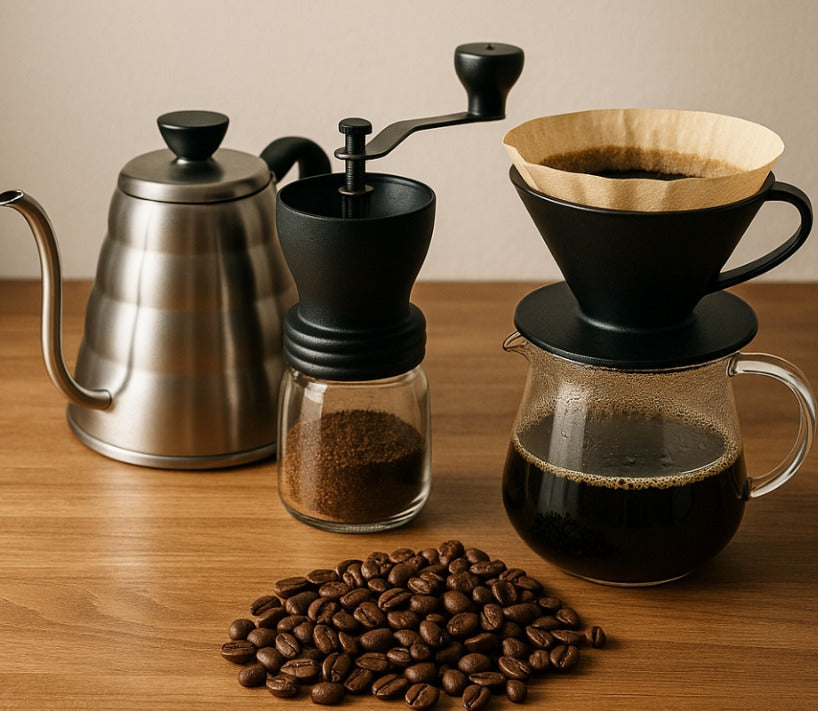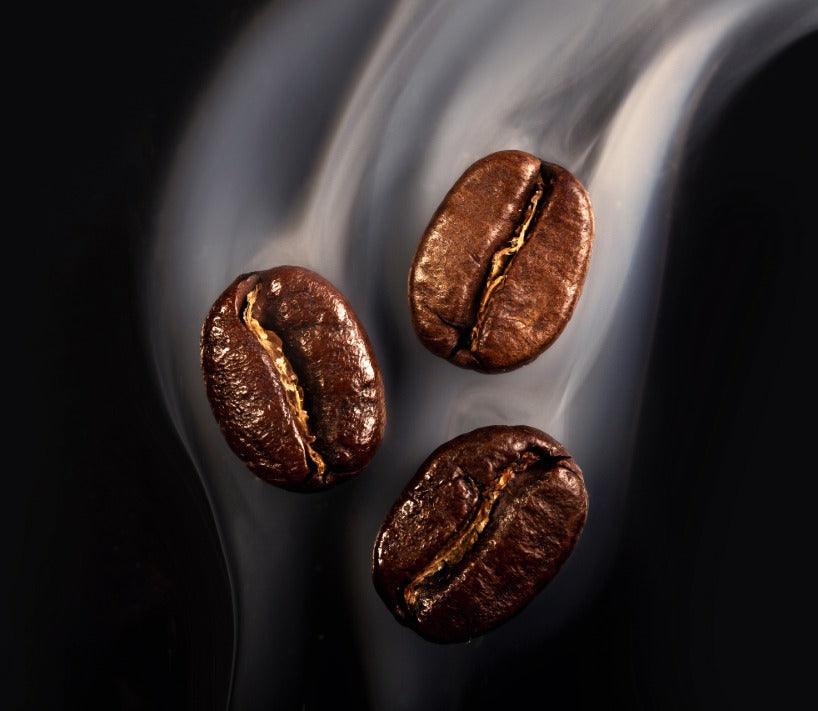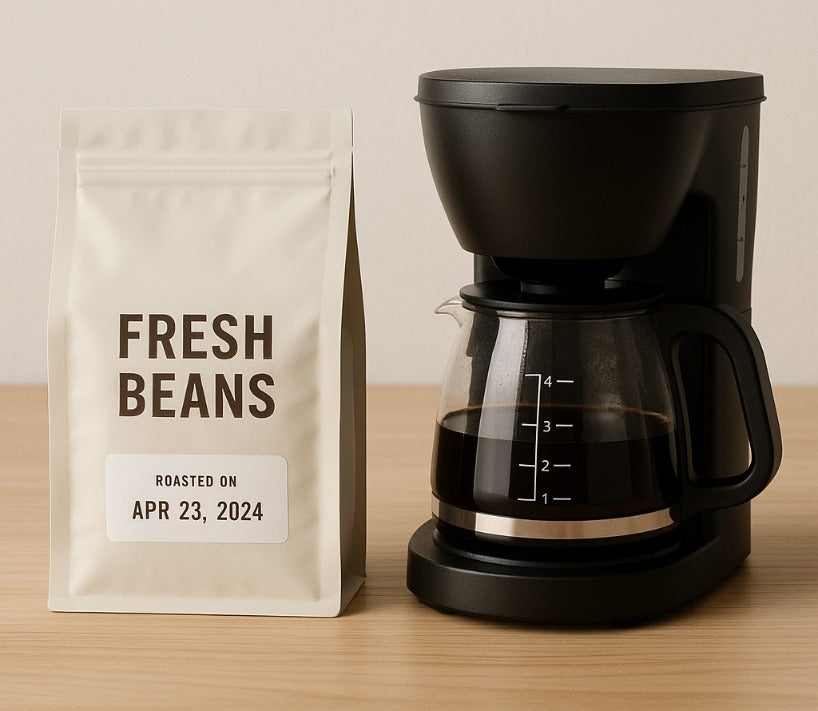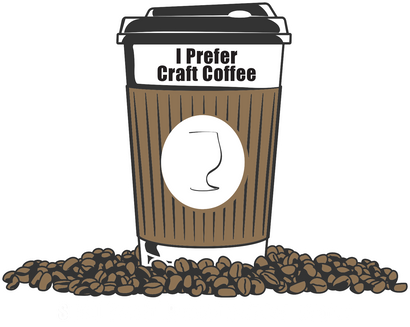From Dinosaur Dust to Morning Magic: Why Your Coffee Deserves an Upgrade
May 18, 2025 4 min read
From Dinosaur Dust to Morning Magic: Why Your Coffee Deserves an Upgrade
“Wait, Did My Coffee Just Time-Travel?”
I was halfway through my usual “convenience coffee”—you know, the paper-cup potion I grab while sprint-scrolling through emails—when it hit me: this stuff tastes suspiciously like it was roasted back when dial-up internet was still a thing. That epiphany sent me down a rabbit hole of questions: Why does one cup make my taste buds sing while another feels like liquid cardboard? And how on earth did we get brainwashed into thinking speed equals quality in the first place?
Spoiler alert: not all beans are born equal—some are pampered, high-scoring, air-roasted celebrities; others are tired extras hanging around warehouse shelves larger than my old high school. Grab your mug, and let’s peel back the foil on the myths that keep us stuck in “coffee mediocrity.”
The Uncomfortable Truths Behind Your Daily Brew
1. The Convenience Coup: How Big Chains Rewired Our Expectations
There’s a reason your brain lights up like a slot machine when you hear, “Order ahead, skip the line!” Fast coffee is a marvel of modern logistics—but flavor often takes a back seat. Commodity beans are sourced for price and volume first, taste second. Roasting happens in industrial batches weeks (sometimes months) before you swipe your app. The result? A uniform—but muted—profile engineered to offend no one and dazzle…well, also no one. Sure, it’s handy, but calling it the best coffee online would be like handing out Michelin stars at a drive-thru.
2. Supermarket “Dinosaur Dust”: When Convenience Meets the Clearance Aisle
Step into any grocery store aisle. See those vacuum-sealed bricks promising “Mountain-Fresh Flavor”? Many were roasted months ago, ground into a fine powder (hence dinosaur dust), and left to languish under fluorescent lights. Oxidation has a field day here, stripping away aromatic oils that make freshly roasted beans sing. By the time you brew, the flavor resembles—how do I put this diplomatically?— Burnt toast’s distant cousin. If you’re hunting where can I buy fresh coffee beans near me, the center aisle probably isn’t it.
3. Enter the High-Scoring, Air-Roasted Rebel Beans
Now meet the cool kids: specialty beans vetted by licensed Q-graders—think sommeliers, but with espresso stains instead of red-wine lips. These beans score 80 points or higher on the Specialty Coffee Association scale, meaning they’re bursting with distinctive flavors (tangerine, cocoa nibs, jasmine—pick your adventure).
Why air-roasting? Instead of tumbling over hot metal drums, beans float on a bed of super-heated air. The result is an even roast without scorching, which lets their natural sugars caramelize gently and keeps acrid notes at bay. Translation: a cup so flavorful you’ll keep sniffing the empty mug like a weirdo.
4. Freshness Is a Sprint, Not a Marathon
Coffee’s peak flavor window is roughly 3 to 30 days post-roast for most brew methods and up to 10 days for espresso. Beyond that, volatile aromatic compounds take a permanent vacation. That’s why the best small batch coffee brands stamp bold roast dates on every bag—and why the savviest drinkers set phone reminders to restock. (Trust me, that “I’ll finish the bag eventually” mentality leads straight back to dinosaur dust.)
Keywords sneak-in (naturally, of course): If you truly want the best espresso beans or good coffee to drink black, freshness isn’t optional; it’s the main character.
5. Flavor Is a Spectrum, Not a Single Note
Commodity coffee aims for “hot, brown, caffeinated.” Specialty coffee, on the other hand, plays symphonies: bright Kenyan acidity, syrupy Guatemalan chocolate, hibiscus-like Ethiopians. For coffee lovers turned flavor chasers, these cups rewire what “coffee” can be. Even best coffee for non coffee drinkers converts show up once they taste a naturally sweet Costa Rican and realize bitterness isn’t mandatory.
6. Sustainability & Ethics: The Hidden App Story
Because specialty lots are smaller and traceable, roasters pay higher premiums directly to farmers. That means communities get better wages, and farmers re-invest in agronomy that lifts cup quality further. It’s a virtuous cycle wrapped inside your morning routine. Plus, many of these growers use eco-friendly practices, so the planet wins alongside your palate.
7. “Top Coffee Delivered” — How Technology Bridged the Freshness Gap
Here’s the kicker: you no longer need to live next to a hip roastery to sip world-class beans. Rapid shipping lanes (often same-day or two-day) now let you buy specialty coffee online and receive it at peak flavor. Look for roasters that roast-to-order, note the shipping cutoff, and slap roast dates loud and proud on the bag. That’s the hallmark of the best craft coffee online scene.
8. Storing Like a Pro (Because Plastic Scoops Matter, Too)
Once those precious beans land, keep them in an airtight, opaque container away from light, heat, and moisture. Grind right before brewing, and if you’re gifting, label it “Open ASAP.” After all, coffee beans as a gift lose some magic if left in a closet until next Valentine’s Day.
How to Level-Up Your Cup Without Moving to Colombia
-
Read the Roast Date Like a Best-By Oracle. If you can’t find one, it’s probably not worth your mug.
-
Start Sampling. Many roasters offer sample sets—perfect presents for coffee lovers or for your own tasting flights.
-
Match the Bean to the Brew Method. Want a syrupy French-press? Try a medium roast from Brazil. Need floral pour-over vibes? A washed Ethiopian will make your Chemex swoon.
-
Explore Small-Batch Subscriptions. They automate freshness, solving the “Oops, I’m out of beans” crisis and ensuring top coffee delivered before caffeine desperation strikes.
-
Share the Knowledge. Next time someone brags about their discount tub o’ Joe, casually drop the phrase “oxidized flavor compounds” and watch eyes widen.
The Bigger Takeaway
We spent decades equating coffee convenience with quality, but the two were never synonymous. Great coffee takes intention—from seed to sip. By switching to high-scoring, freshly air-roasted beans, you’re not just upgrading a beverage; you’re opening a passport to global terroirs, supporting equitable supply chains, and making mornings feel a bit more magical.
So the next time you’re tempted by the drive-thru or that bargain-basement tin, remember: somewhere out there, a farmer picked a perfectly ripe cherry that could transform your day—if only you give it the chance to strut its stuff. Cheers to better beans, brighter mornings, and never settling for dinosaur dust again.
Also in Best Coffee To Buy Online Education

Brewing The Best Coffee at Home: Stop Waiting in Line
November 03, 2025 4 min read
Learn Brewing The Best Coffee at Home with a quick Proof → Promise → Plan system: choose fresh, roast-dated beans, use a simple 1:16 recipe at 200°F, and lock a 4–6 minute routine that beats the drive-thru on taste, time, and cost.

Best Tasting Coffee At Home: Stop Buying “Deals,” Start Buying Value
November 02, 2025 4 min read
Want the Best Tasting Coffee At Home? Skip old ‘deal’ beans. Use fresh, high-scoring, air-roasted coffee and a simple 1:16 plan. This guide shows proof, a clear promise, and a step-by-step plan to order smart, brew better, and enjoy sweeter, cleaner cups—daily.

Best Coffee To Make At Home: Fresh Beans, Simple Plan
October 31, 2025 4 min read
Learn the Best Coffee To Make At Home with a tiny, repeatable system: pick fresh, high-scoring, roast-to-order beans; brew at a simple 1:16 ratio; fix cups with one change at a time. Includes a comparison table, freshness rules, and beginner-friendly FAQs.
